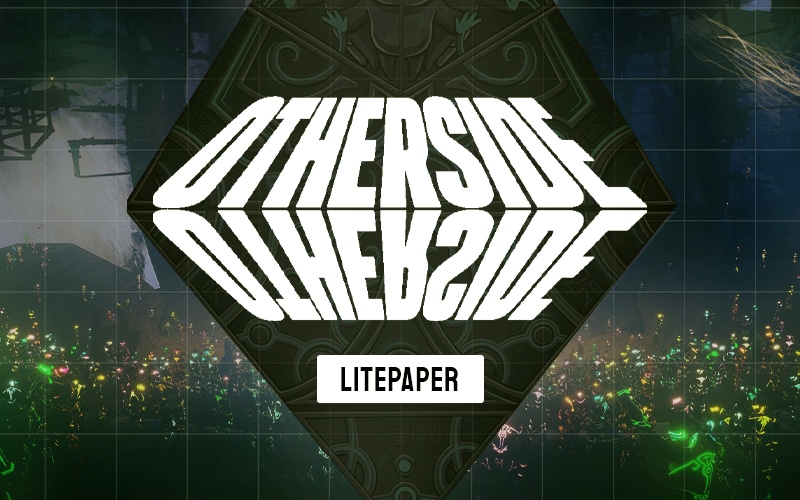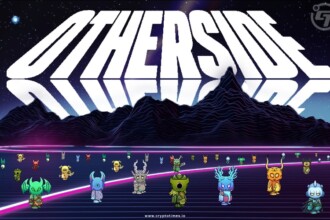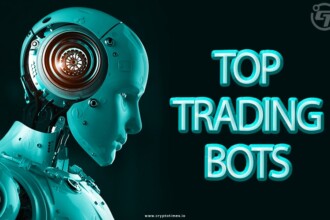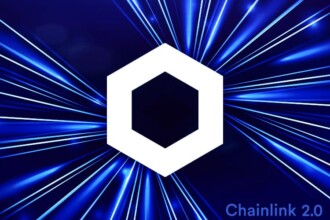“Many Voyagers have already boarded the Otherside metaverse adventure, swayed away by the giant bored ape through a vibrant, mysterious portal into the realm of endless possibilities and opportunities.
Are you afraid that you missed the chance to embark on this journey? You’re mistaken, cause Otherside Litepaper is here to offer a lot more secrets for you to learn! And perhaps we’ll all cross paths on the Otherside!” – Rupal Sharma
The Otherside Litepaper is a stepping stone to the world-building Otherside metaverse. It is designed to communicate and explain the principles of the platform and how it will evolve with the voyagers’ and developers’ decisions that will shape Otherside.
As the project plays out in future events, the Otherside litepaper will be replaced by a Codex that will continually transmogrify with Voyager actions to present the latest declarations, data, and developments.
If any of this sounds unfamiliar to you, Let’s begin to comprehend what the Otherside litepaper proposes.
Otherside Metaverse Roadmap
While the Otherside litepaper serves as an inception, you must know what the otherside metaverse is, what it offers to the developers, and the community tied to it.
What is the Otherside Metaverse?
The Otherside metaverse is a world-building platform that provides an exciting environment to create, play, compete, connect and explore together. Users can experience Otherside through narrative gameplay, also known as Voyager’s Journey, co-developed by Yuga Labs and Improbable by incorporating the technology from M2.
The First Trip to Otherside Metaverse
The Otherside metaverse is still in its infancy. It has a long way to go before becoming a full-fledged virtual world. Yet, the team behind the project announced the completion of the “First trip” on July 16 in which over 4,500 voyagers participated. It was one of the several trips Voyagers can partake in.
More trips will be announced on a different date in order to accommodate as many voyagers as possible.
Also Read: Otherside Metaverse Gameplay ‘First Trip’ Begins Testing this Week
The term voyager is given to the Otherdeed NFTs holders who will also participate in upcoming tech demos similar to the “first trip”. Voyagers will also get plenty of chances with playtesting sessions to help developers level up the platform’s technology.
Specific details on the date and time of such trips will be announced on Otherside metaverse social media accounts.
A voyager must take part in one of the trips or watch the livestreams if they want to count as finishing up the First Trip Stage.
Note that the Otherside ecosystem uses ApeCoin, an ERC-20 governance & utility token developed by the ApeCoin DAO community. If you happen to participate in the Otherside journey, you must hoard some ApeCoin.
Additionally, Yuga Labs plans to develop governance frameworks that are truly representative of changing community demands and are constructed from the ground up, as per the Otherside litepaper. More details will be disclosed on how to verify your participation in the days ahead.
Otherside Metaverse Phases
In the coming days, Yuga Labs will introduce new experiences and games that the community can create to expand the possibilities of the metaverse. There would be added utility of Otherside which will keep on growing to increase participation and fulfill the needs of the surrounding community.
There would be a total of three phases, in which Otherside litepaper details the very first phase. In Phase 1, only Otherdeed holders or Voyagers, along with selected third-party developers will be able to participate and contribute to the initial stages of the Otherside metaverse’s features and uses.
What is Otherside Phase 1?
Otherside Phase 1 is the beginning of development for the metaverse in which all voyagers are invited to participate in the “Voyager’s journey”. Phase 1 will include an 11-part storyline surrounding a mysterious Obelisk that has appeared in the Otherside universe.
Voyagers can team up with each other, and develop their own experiences on their slice of Otherside lands. They can also discover and shape what can be crafted, harvested, traded, bought, and sold.
Phase 1 is all about Voyagers and selected developers who will be given unique opportunities to network and collaborate with each other as well as the industry professionals.
Voyagers will lead in shaping the core capabilities of the platform through exclusive events, playtesting opportunities, and co-developers of Otherside Development Kits (ODKs). Otherside litepaper has elaborated ODKs which will be discussed later in the article.
For now, let’s understand what are the fundamental principles on which Otherside is built.
Otherside Fundamental Principles
There are three fundamental principles mentioned in the Otherside litepaper that outlines how the Otherside metaverse will evolve with the contribution of voyagers, developers, and the crypto community at large.
1. Community-focused Metaverse
As mentioned in the Otherside litepaper, the metaverse has an open and transparent approach where voyagers, developers, and contributors can directly participate in important events. A large-scale playtest will allow the related community to give feedback on new systems, content, mechanics, and SDKs which will ultimately push the limits of Otherside’s technology.
At the same time, casual players will be able to utilize in-game building tools as their contribution to the metaverse. As the platform transitions into new phases of development, the doors to untapped opportunities will be thrown open.
2. Authenticity, Interoperability, and Ownership
The Otherside metaverse has a set of 200,000 parcels of dynamic NFT land called ‘Otherdeeds’ which has a unique composition of natural elements, resources, elemental attributes, and much more.
As a voyager, one has genuine ownership and authenticity over a plot and can however develop it as per their choice (under community-informed guidelines). Future versions of Otherside will also allow interoperability, giving voyagers the possibility to bring their own external collections and NFTs to life inside the metaverse.
3. Incentives and Support
Otherside litepaper also mentions that the platform seeks to connect with its user base by not only offering them immersive gameplay but also real incentives. Yuga Labs is focused on providing structure through a collaborative ecosystem and network of contributors to bring visions to life.
Voyagers and developers can network with peers, industry professionals, engineers, and designers to communicate their ideas for the space to become more interactive and user-friendly.
The Otherside Litepaper also outlines how Yuga Labs will offer the training, wisdom, and leadership necessary to build the metaverse and empower its members.
While the statements in the Otherside Litepaper are vague and lack details about these incentives, participants are eager to play the treasure hunt-like experience to find out more.
Role Of Voyagers and Developers in Otherside
Voyagers are the cornerstone of the future developments in the Otherside and also the first adopters and believers. They are the core characters in the Otherside’s history and will play a vital role in Voyager’s Journey.
The reason described behind the deep involvement of Voyagers in the Otherside Litepaper says a lot about how this project will turn out. With the continuous participation of voyagers, the metaverse will be able to offer a more interactive experience.
This will be the first step to connect with the Voyagers and understand their group along with the individual need to optimize avenues for maximum fun and entertainment.
To execute these plans, the Otherside Development Kit (ODK) will be required. If you are wondering what the utility of ODK is then read on.
What is the Otherside Development Kit (ODK)?
The Otherside Development Kit (ODK) is a suite of “creation tools” built with Improbable that will allow users to create interoperable content for Otherside including people, places, and things.
Otherside is built by developers and Voyagers together, so to make sure everything aligns and works properly with each other, Otherside Litepaper introduced some rules called “Open Object Standard”.
Open Object standards
Otherside Open Object Standards are a set of rules that describes what objects are, what they look like, and how they behave.
The objects will be tagged using descriptors from the Otherside Metadata Ontology, enabling common gameplay behavior.
For example, if the object is a chair then it would only be used to be sat on and this function would be tagged as Metadata tags that follow the ERC-721 metadata JSON standard. Similarly, using the metadata tags, an object that is a ball will only be used to be picked up and thrown within the metaverse.
Otherside supports 2D images, and 3D objects, also the current prototype uses JavaScript. Additional details would be made available following thorough testing when requested by the Voyagers.
Objects built using the open object standard will be fully supported within Otherside, and any M2 metaverse project, as well as any outside project that adopts this standard.
Otherside litepaper suggests two things to create objects within Otherside as mentioned below:
- Obtain a template of the object
- Manufacture the object using resources
The following section will elaborate on how you can create objects using ODK tools.
Authoring and Manufacturing Process
There are two types of primary processes using ODK tools as described in the Otherside litepaper.
- Authoring Tools
These are in-world easy-to-use tools that let you collaboratively bring assets or objects together. After this, you can compose them into templates for interoperable objects.
The templates can be shared, traded, or sold between Voyagers and don’t cost any resources. You can create fun templates such as a smart 3D object that makes noise when a player walks by, a tool that turns important images into stickers, an object that follows people around looking for attention, a sort of virtual drone, and more.
- Manufacturing Tools
For an object to become real and permanent in the Otherside metaverse it has to be manufactured.
In order to do this, a voyager has to collect resources from around Otherside and combine them with a template to create as many objects of that type as they want. Remember, the Voyager must have enough resources to create multiple objects.
Solving Three Major Technical Challenges
Otherside Litepaper has provided solutions to three major technical challenges that other metaverses have failed to address. Otherside utilizes Improbable’s M2 technology to allow thousands of Voyagers to gather in the same space at the same time.
With this advanced technology, the goal is to let everyone be able to communicate and play together on any device. Otherside aims to emerge as one of the best places around to build and join communities, learn from each other, and explore the metaverse together.
To implement this, the Otherside Litepaper has highlighted three major technical challenges mentioned below:
- Crowd Networking and Rendering:
Other metaverses cap out at a maximum room size measure in the dozens instead of thousands. Otherside intends to allow everybody to interact with a dense crowd in real-time with a great frame rate. Every participant would be able to visualize their unique characters based on NFT equipment and clothing.
This would be done using Morpheus technology, enabling thousands of players to participate in events such as Scavengers ScavLab and the AleXa concert. Morpheus has already smashed records for in-room capacity while maintaining more than 30 frames per second with high-fidelity graphics.
Leveraging this technology will offer a groundbreaking networking solution that will allow a typical 100-player battle royale game.
- Crowd and Spatial Audio:
Virtual chat and MMORPG experiences struggle with moderation, hot mic audio, and other natural communication. It becomes difficult to communicate in high traffic, and players can not even hear each other when there are only dozens.
Otherside incorporates spatial audio built to handle thousands of input audio streams and thousands of rendered spatial output streams. It’s a realistic crowd audio solution that can mix thousands of live audio into a spatialized mix.
- Access from any Device:
Other metaverses have a limited number of potential players who have high-performance gaming PCs. The addition of any rare and expensive equipment to access an experience dramatically reduces the player base. Otherside wants to solve this problem to draw huge crowds of people of all kinds.
To do this, Otherside has included a complete game video streaming service that gives players access to Otherside from a web browser including mobile devices in seconds.
Upcoming Stages in the Voyager’s Journey
In the coming days, the Otherside letter will evolve to the first version of the Codex. Among a total of 11 stages, First Trip has already been inaugurated as mentioned earlier.
Other stages of the Voyagers’ Journey are The Codex, Koda Origins, The Decoupling, The Growth, The Agora, The Dream, The Choice, The Settling, The Toolkit, The Aeronauts, and The Rift.
For now, Agora has been described in Otherside litepaper as a planned marketplace for buying, sorting, finding, trading, and selling the huge variety of things within the Otherside that can be created, harvested, farmed, and more.
More information on these stages will be revealed as Otherside will evolve in future events.
The Final Word
Otherside metaverse will introduce new ways that will shape the story of a strong narrative that will tempt you to take part in more special trips and events. It’s just the beginning. The community is rapidly growing, be a Voyager, and embark on the journey to the Otherside!







